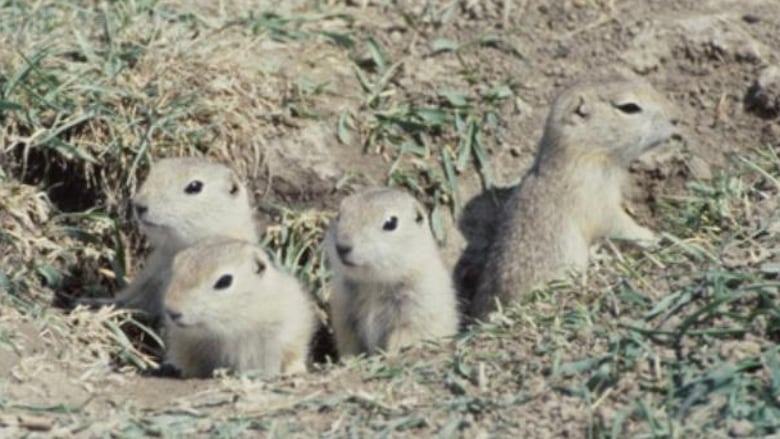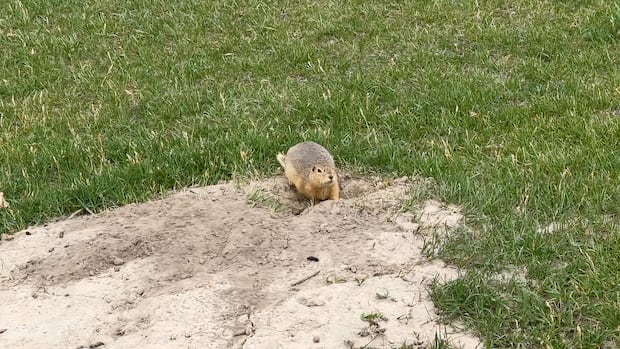Camrose County seeks data on agricultural damage from Richardson's ground squirrels
Farmers consider the squirrels, commonly known as gophers, as pests

Camrose County is gathering data on infestations of Richardson's ground squirrels, colloquially called gophers, which have been tearing up agricultural land.
The county wants data from farmers on damages and economic impacts from squirrel infestations. It intends to draft a report using the data to present to the federal government, for help controlling the ground squirrel population.
Alberta's Agricultural Service Board has noted an increase in Richardson's ground squirrel population, but has also acknowledged that little research has been done on where in the province they are problematic or best practices for population management.
Humphrey Banack, who owns a farm in the county about 80 kilometres southeast of Edmonton, said he has experienced reported significant losses
"They're voracious eaters. You know, they grow from the size of a small mouse to a rat in two months," he said.
So far, he's estimated that damages on his farm caused by the squirrels have reached around $20,000, across nearly 20 acres of destroyed crops.
Banack said he has considered ripping up the land where the rodents have burrowed, to start anew.

"Those costs are higher than our grain crop cost because we're going to pull some drills over and seed next year. There's not a bunch we have to do to manage their infested area in grain crops," he said.
"The best control we can have is shooting them or lead poisoning."
Strychnine ban
Farmers had traditionally used toxic substances like strychnine or anticoagulants to control pests on their land.
The federal government started to phase out the use of strychnine in 2020, and outright banned the substance by 2024. Health Canada found that strychnine uses did not meet the requirements for protection of the environment.
Camrose County's survey to farmers states "this is an important chance to make sure Camrose County producers are heard at the federal level — especially following the ban on strychnine in 2023."
In a letter released in June, the Alberta government criticized the strychnine ban, stating that "the annual risk to hay and native pasture [due to damage caused by ground squirrels] exceeds $800 million."
The letter calls for the government to reinstate the use of the pesticide.
For wildlife biologist Gilbert Proulx, toxic substances like strychnine aren't all they're cracked up to be, when it comes to Richardson's ground squirrel.
Proulx, who is also the director of science at Alpha Wildlife, said these substances don't do much to decrease the population of Richardson's ground squirrels.
"It happens only when there's no more food to eat, and then the squirrel will eat the grains of strychnine," he said.
"But most squirrels will recognize they're feeding on something that is not that healthy, so a lot of them will stop."

He said in order to control the ground squirrel population, farmers need to eliminate at least 75 per cent of the population on or around their land.
Pesticides like strychnine also pose a threat to the predators of ground squirrels.
"They get killed by their predators and their predators die of secondary poisoning," Proulx said.
Proulx said need farmers need to be implementing year-round maintenance measures.
"The best is to maintain your fields that are at a proper level of vegetation. Encourage the predators to stay in your fields with rock piles so that they … can establish themselves. Those predators will do quite a dent in the population," he said
"It's no use to panic and put poison everywhere and kill the wrong species."
Banack said there is a risk of farmers and producers incorrectly using the pesticides. But, he said, when used properly, the substances could save farmers land and money.
"The vast majority of producers do understand that there are risks to using more potent stuff, but those risks can be very, very well managed from our end."


